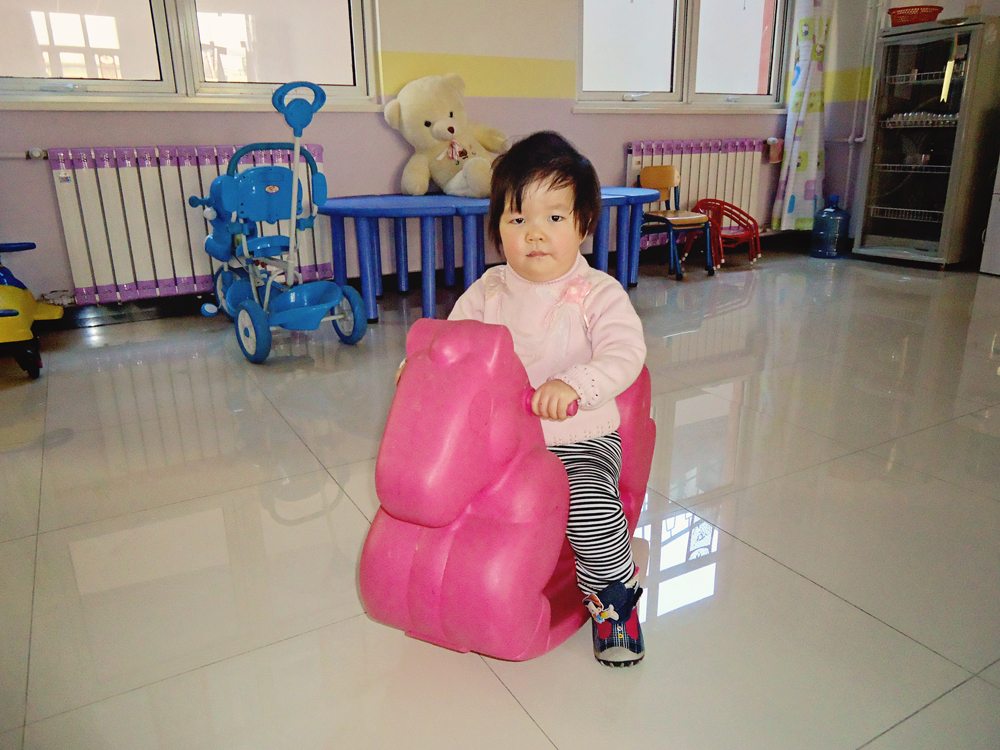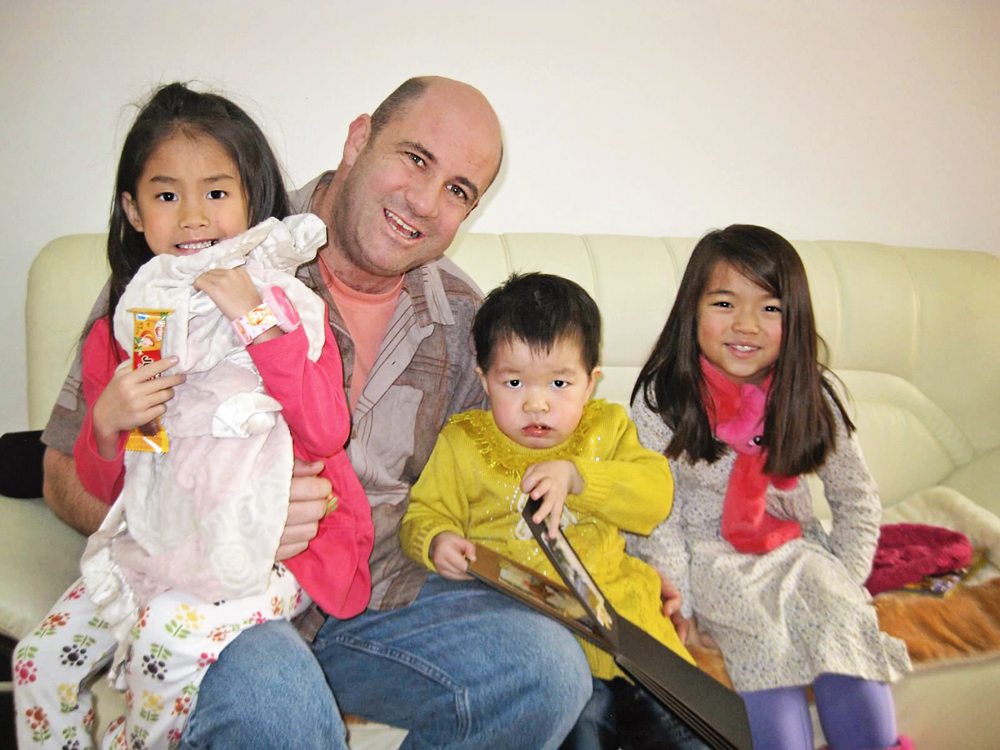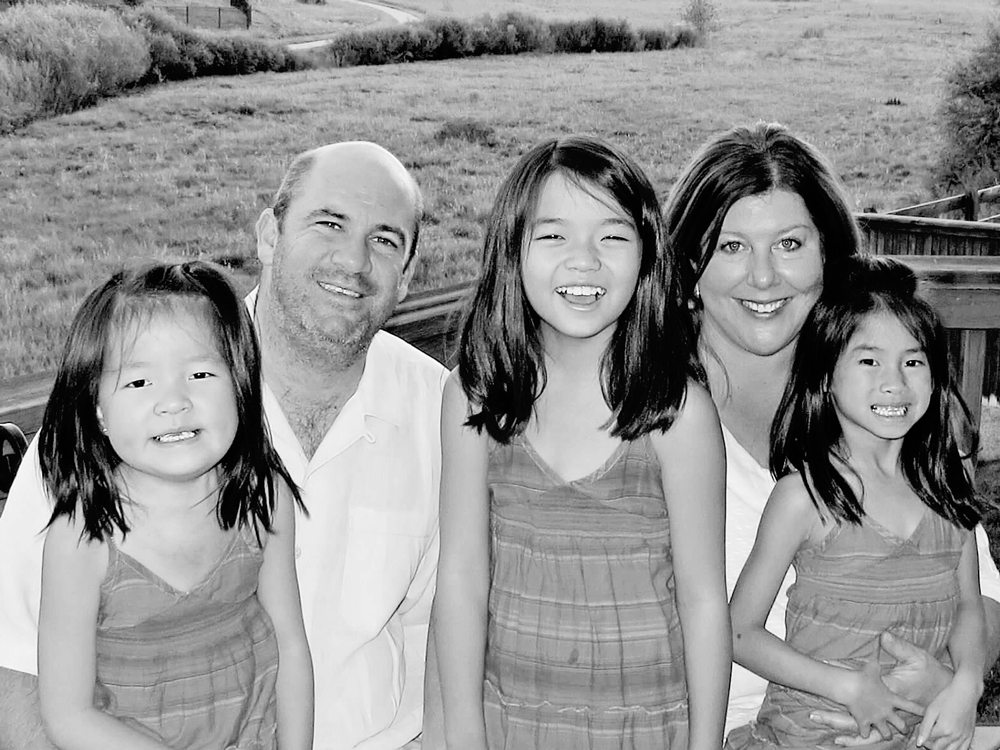When I first read Abby’s file and read the diagnosis Hemangioma and Kassanbach Merritt Syndrome (or Phenomenon), I thought to myself, “How bad could it be?” She has a birthmark or as her file called it ‘a large hemangioma’ on her neck and chest, surely once we get her home we can ‘fix’ it! Then I did what every adoptive mom does, I googled!
(Big, big mistake).
The first article I came across, and definitely one of the more positive ones, was from Boston’s Children’s Hospital. It went like this:
Overview : If your child has been diagnosed with Kasabach-Merritt phenomenon (KMP), a complication in which certain vascular tumors trap and destroy platelets, we understand that you are very concerned about your child’s health. You probably have a lot of questions about this complex condition and the vascular tumors that cause it. Here’s what you need to know about Kasabach-Merritt phenomenon: Kasabach-Merritt phenomenon is a serious complication because platelets help form blood clots to stop bleeding. If your child doesn’t have enough of them, your child may have an increased risk of bleeding. Kasabach-Merritt phenomenon is never caused by common infantile hemangiomas.
It’s associated with the following tumors:
• Kaposiform hemangioendothelioma
• Tufted angioma
• Cutaneovisceral angiomatosis with thrombocytopenia (CAT) also called multifocal lymphangioendotheliomatosis with thrombocytopenia (MLT)
KMP is associated with larger, more aggressive or more deeply invading benign vascular tumors.
After reading that my heart started to flutter, my face became red, my hands were shaking, and I realized I was having an all-out panic attack! How could God be calling me to parent this child? A child with a tumor and a bleeding problem, and a rare, complex disease? I should have known that this beautiful little girl, who had been waiting on the shared list for over 2 years, couldn’t possibly have had a simple and straightforward hemangioma (typical hemangiomas involute or go away on their own within a few years). My heart sank because I knew I could not parent a child with such a serious condition.
I went to bed that night thinking of those dark, sad, eyes and argued with God for most of the night. By the next morning I decided I couldn’t possibly make my decision based on Google alone. I got my nerve up and called our pediatrician who has been practicing for over 20 years and told him about a little girl from China who had been diagnosed with KMS. He told me to bring in her file and that we could look at it together.
At this point Abby was 3 1/2 and had been on the shared list for well over 2 years. Her medical file was sketchy at best and she had been passed over by many families who could not get past 3 letters written in her file: KMS. When Dr. Delano read through the file he said these words to me “Gigi, in all my years I have only seen this condition once, and I’m not going to lie, it did not turn out well. BUT – here is the thing – there is no way a child who had this could have survived for 3 years without any treatment.” He also went onto explain he could not confirm the diagnosis (nor could any MD) because her file didn’t contain ANY blood work including platelet counts. One thing was for sure though, if this child had such a condition she would be way better off in the states where she could receive treatment than wasting away in an orphanage.
Somehow by the grace of God my courage grew and I decided we would bring Abby home no matter what (although the biggest hurdle was talking my hubby into another adoption – he had no idea I was looking at the file of my child, let alone a princess with a potentially fatal disorder). Thankfully God helped me in convincing dear hubby and we have never looked back.
As the months when on and we continued working on our dossier and waiting through all the adoption milestones, I would have moments of panic. What on earth was I possibly thinking – I can’t do this, what if, what if, what if. Somehow though, the panic would subside and I was left with a steely determination of how I would ‘help’ this child live a worthwhile life no matter what. I hoped for the best but prepared for the worst researching top specialists (Boston’s Children’s, the Vascular Birthmark Center of New York, Cincinnati Children’s Hospital, just to name a few). By the time we left for China we were ready but had no idea what to expect when we got there.
Meeting Abby for the first time on Jan 13, 2013, something was instantly obvious – this did not appear to be a child on the verge of death! Yes she had a light purple birthmark under her chin and on her chest but it did not seem to bother her at all. She was plump and pink and robust and beautiful in every way.
She did not have any signs of a low platelet count, no bleeding gums, no bruises, no petechia. She would eat, and drink and laugh and smile. She instantly bonded with her sisters and wanted to do everything they were doing – running, jumping, skipping, giggling. There were moments in China I would hold my breath and think – this is way too good to be true! Something horrible is going to happen at any moment – she is going to fall and cut her knee and bleed out in China!
After an amazing 2 1/2 weeks we returned home from China. The next morning I went to wake Abby and noticed something was wrong! Her breathing was labored and she was unconscious. I picked her up and rushed to the emergency room where the nurse grabbed her from my arms and started calling codes. Before I knew it the emergency room was full of doctors and nurses asking me a flurry of questions. Did I know her medical background, where were her biological parents and what was their health history? if she had been exposed to any infectious diseases, if she had a history of seizures, etc? All I could do was tell them of her diagnosis from China and pray. The hours that followed were full of medical tests: Cat scans, x-rays, blood tests, urine tests, spinal tap.
Here’s the thing – every single test came back normal! Her platelets were normal, her blood tests were normal, her ct scan was normal – praise the Lord! They were not concerned at all about the birthmark on her neck/chest. But she did have low oxygen and was slightly anemic and because she was so lethargic they admitted us to the local children’s hospital.
After being on oxygen and sleeping through the night, she woke up happy and chipper the next morning and they released us almost immediately. The doctors never could really give a reason – just pure exhaustion and perhaps the change in altitude combined with the anemia. Who knows, but one thing they knew for sure was that her platelet counts were absolutely, beautifully normal and she could not possibly have KMS.
About 2 weeks later we met with the head of the Vascular Malformation Clinic at our Children’s hospital. He reviewed her blood work, looked at her birthmark, and inspected every inch of her body. His diagnosis: that what remained of the original vascular malformation/tumor had regressed and what was left was purely cosmetic in nature. He went on to say that once such a tumor regresses to this point it never causes the KMS phenomenon again and there was absolutely nothing to worry about from a vascular malformation standpoint.
I later learned that Abby had been treated in China with a drug called Propranolol which is a beta blocker. The orphanage director loved Abby and sought help from what she called ‘a western doctor’. That doctor prescribed the Propranolol which at that time was cutting edge treatment which likely shrunk the tumor and saved her life. Either way, miraculously, what at first sounded like a scary diagnosis has turned out to be a complete non-issue.
Abby is now enjoying the last few weeks of kindergarten and looking forward to 1st grade next year. She is an active, healthy child who is doing great in school and catching up to her sisters quickly. Not a day goes by that I don’t thank God for the privilege of parenting her.
— guest post by Gigi
,





























Don’t be scared of ITP. It can be scary at times but our daughter is receiving the best care here.